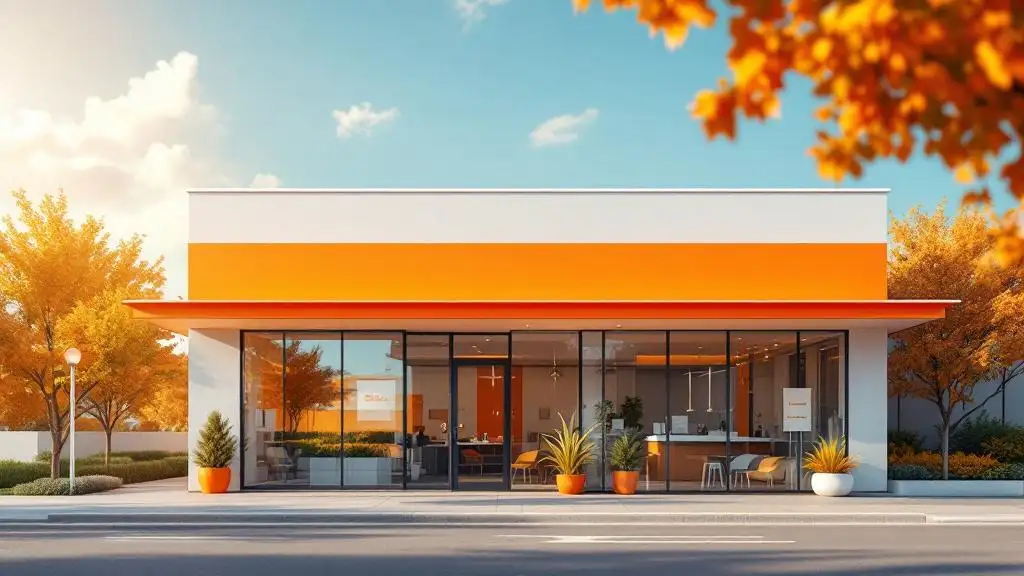The Hidden Truth: SEO Nursing Home Statistics Exposed
By harnessing the power of SEO, nursing homes can improve their online visibility, attract potential residents, and stay ahead of the competition.


The Hidden Truth: SEO Nursing Home Statistics Exposed
Understanding SEO for Nursing Homes
In the digital age, search engine optimization (SEO) plays a crucial role in the success of nursing homes. By harnessing the power of SEO, nursing homes can improve their online visibility, attract potential residents, and stay ahead of the competition. This section explores the importance of local SEO and the impact of online research in the context of nursing homes.
Importance of Local SEO
Local SEO is of paramount importance for nursing homes. According to Invoca, 39% of senior living hunters initiate their search through organic search. This highlights the need for nursing homes to master local SEO techniques to ensure they can be easily found by potential residents online.
Optimizing for local SEO involves strategies such as creating location-specific landing pages, optimizing Google My Business profiles, and acquiring local citations. By employing these tactics, nursing homes can increase their visibility in local search results, making it easier for potential residents and their families to find them when searching for senior care options.
Impact of Online Research
Online research has become a crucial aspect of the senior care customer journey. 75% of senior living consumers research their options on search engines. This emphasizes the significance of having a strong online presence and utilizing effective SEO strategies to capture the attention of potential residents.
Nursing homes should focus on providing valuable and informative content on their websites to cater to the needs of those conducting online research. This can include blog posts, articles, and guides that address common concerns and questions related to senior care. By positioning themselves as trusted sources of information, nursing homes can establish credibility and build trust with potential residents and their families during the research phase.
Additionally, it's important to optimize websites to drive calls and conversions. 68% of senior living marketers consider their website as their most effective channel. This highlights the significance of optimizing websites to ensure they are user-friendly, informative, and persuasive, ultimately encouraging potential residents to take the next step and contact the nursing home.
The increasing use of smartphones among the older population further emphasizes the importance of SEO for nursing homes. According to Black Lab Digital, the number of people aged 65 or over using smartphones has grown by 63% in the past decade. This presents an opportunity for nursing homes to target their audience based on age, location, and device usage, allowing for more effective and targeted SEO strategies.
By understanding the importance of local SEO and the impact of online research, nursing homes can optimize their online presence to attract and engage potential residents. Implementing effective SEO strategies can position nursing homes as trusted providers of senior care and ensure their visibility in search engine results, ultimately leading to increased inquiries and conversions.

SEO Trends in Senior Living
In the ever-evolving landscape of digital marketing, understanding the SEO trends in senior living is crucial for effective outreach to potential residents. By staying informed about the search behavior of senior living consumers and the demand for information on senior care, marketers can optimize their strategies to reach and engage their target audience.
Search Behavior of Senior Living Consumers
39% of senior living hunters begin their search through organic search. This highlights the importance of mastering local SEO for senior living facilities, as it enables them to be easily found by potential residents online. By implementing effective SEO strategies, senior living communities can increase their visibility and capture the attention of those actively seeking senior care options.
Demand for Information on Senior Care
The demand for information on senior care services is substantial, as evidenced by the 6,000 online searches related to senior care conducted every hour in the U.S.. This statistic underscores the significance of strong SEO strategies for marketers in the senior living and care sector. By optimizing their online presence and providing valuable, informative content, senior living communities can meet the needs of those seeking information and position themselves as trustworthy and reliable resources.
To capitalize on this demand, senior living marketers must prioritize their digital presence and ensure their websites are optimized for search engines. A whopping 75% of senior living consumers research their options on search engines, making it essential for communities to have a strong online presence to capture the attention of potential residents. Investing in website optimization and implementing effective SEO techniques can significantly impact visibility and online discoverability.
By considering the search behavior of senior living consumers and their demand for information, marketers can tailor their SEO strategies to align with the needs and preferences of their target audience. This ensures that senior living communities are visible, accessible, and well-positioned to attract potential residents in an increasingly competitive digital landscape.

Marketing Strategies for Senior Living
When it comes to marketing senior living facilities, implementing effective strategies is essential to attract potential residents and their families. In this section, we will explore three key marketing strategies for senior living: website optimization, cost of acquiring leads, and targeting potential residents.
Website Optimization
In the digital age, having a well-optimized website is crucial for senior living facilities. According to a study by Invoca, 68% of senior living marketers consider their website as their most effective channel. To ensure your website is optimized, it's important to focus on the following areas:
- Search Engine Optimization (SEO): Implementing local SEO strategies is vital as it helps potential residents find your facility when they search online. Approximately 39% of senior living hunters begin their search through organic search, emphasizing the importance of mastering local SEO.
- User Experience (UX): Creating a user-friendly website experience is crucial for engaging potential residents. This includes ensuring easy navigation, clear information about services and amenities, and a visually appealing design. By optimizing the website for a smooth user experience, you can increase the chances of potential residents contacting your facility.
- Mobile Optimization: With a significant number of senior living consumers conducting research online, it's important to optimize your website for mobile devices. This ensures that potential residents can access information about your facility easily, regardless of the device they are using.
Cost of Acquiring Leads
Acquiring leads in the senior care market can be more expensive compared to other industries. According to Invoca, the average cost for a senior living lead is $431, which is significantly higher than other industries [1]. This emphasizes the value and cost associated with acquiring leads in the senior care market. Investing in targeted advertising, SEO, and other digital marketing strategies can help optimize lead generation efforts and improve the return on investment.
Targeting Potential Residents
To effectively market senior living facilities, it's important to understand the target audience and tailor marketing efforts accordingly. By leveraging social media platforms and appropriate advertising techniques, care homes can gather insights about potential residents and their families. This allows for targeted and retargeted marketing efforts, ensuring that the right messaging reaches the right people. Additionally, geotargeting can be employed to tailor ads to individuals within a specific geographical location, increasing the chances of reaching the desired audience [2].
By focusing on website optimization, understanding the cost of acquiring leads, and targeting potential residents, senior living facilities can enhance their marketing strategies. These strategies help attract potential residents and their families by providing a user-friendly online experience, optimizing lead generation efforts, and tailoring marketing messages to the target audience.
Demographic Trends in Senior Care
Understanding the demographic trends in senior care is essential for nursing homes and senior care providers to effectively cater to the needs of their target audience. In this section, we will explore three significant demographic trends: aging population projection, health disparities and diversity, and the geographic concentration of older people.
Aging Population Projection
The U.S. population ages 65 and older is projected to nearly double from 51 million in 2017 to 95 million by 2060, according to the Population Reference Bureau. This significant increase in the older population emphasizes the growing demand for senior care services, including nursing homes.
As the population ages, the demand for long-term care services is expected to rise. Nursing homes will play a crucial role in addressing the needs of the aging population, providing specialized care and support to older adults.
Health Disparities and Diversity
As the U.S. older population becomes increasingly diverse, racial/ethnic health disparities will play a greater role in shaping overall health [3]. Access to healthcare can be influenced by socioeconomic status and level of acculturation, leading to potential sociocultural barriers to care. Nursing homes and senior care providers must strive for inclusivity and cultural competency to ensure equitable access to quality care for all older adults.
It's important to recognize and address the unique healthcare needs and challenges faced by diverse populations within the older demographic. By fostering diversity and promoting culturally sensitive care, nursing homes can provide individualized and comprehensive services to their residents.
Geographic Concentration of Older People
Older people are becoming more concentrated in certain geographic areas, with rural areas having the highest concentration of older individuals and aging faster than urban areas [3]. This concentration has implications for healthcare planning and resource allocation, including the availability and accessibility of nursing homes in these regions.
According to a study published in JAMA Network Open, the supply of nursing home beds per 10,000 adults aged 65 years or older declined in the majority of U.S. counties from 2011 to 2019. This highlights the need for strategic planning and expansion of nursing home facilities in areas with a high concentration of older adults.
Nursing homes should consider the geographic distribution of the older population when planning their services to ensure adequate coverage and accessibility for those in need of senior care.
Understanding these demographic trends in senior care provides valuable insights into the changing landscape of nursing home services. By adapting their strategies and resources to meet the specific needs of the aging population, nursing homes can continue to provide high-quality care and support to older adults across diverse communities and geographic areas.
Quality and Satisfaction in Nursing Homes
Ensuring quality and resident satisfaction is of utmost importance in nursing homes. Various factors contribute to the overall experience and well-being of residents. In this section, we will explore the Five-Star Quality Rating System, factors affecting resident satisfaction, and the importance of creating a home-like environment.
Five-Star Quality Rating System
To help consumers, their families, and caregivers compare nursing homes easily, the Centers for Medicare & Medicaid Services (CMS) created the Five-Star Quality Rating System. This system assigns each nursing home a rating between 1 and 5 stars, with separate ratings for health inspections, staffing, and quality measures [6]. Nursing homes with 5 stars are considered to have much above-average quality, while those with 1 star are considered to have quality much below average.
The ratings can be accessed through the Nursing Home Care Compare website, which provides valuable information for individuals seeking nursing homes. The website allows users to compare nursing homes based on various quality indicators, helping them make informed decisions about care options [6].
Factors Affecting Resident Satisfaction
Resident satisfaction in nursing homes is influenced by several key factors. Staff connections with residents play a vital role in determining satisfaction levels. Nursing homes that prioritize forming relationships with residents, such as Friends Care Community of Yellow Springs and Austin Trace Health and Rehabilitation, are known for providing excellent care and fostering positive experiences [7].
In addition to staff interactions, other aspects contribute to resident satisfaction, including the overall environment, meals, and activities. Top nursing homes focus on creating a home-like atmosphere that offers choices and fosters a culture of "purposeful living." This approach ensures that residents feel supported and engaged in their daily lives [7].
To gain insights into resident satisfaction levels and recommendations, satisfaction surveys serve as essential tools for community members seeking nursing homes for themselves or their loved ones. These surveys provide valuable information on the quality of care and the experiences of current or past residents. Prospective residents and their families are also encouraged to obtain the most recent resident council minutes to review complaints and feedback. Additionally, visiting nursing homes for separate visits, including unannounced visits during meal times, allows for direct observation of staff-resident interactions [7].
Creating a Home-Like Environment
Nursing homes that prioritize creating a home-like environment contribute to the overall well-being and satisfaction of residents. Providing choices in the physical environment, meals, and activities helps residents feel more comfortable and engaged. This approach fosters a warm and supportive setting that promotes a sense of belonging and purposeful living [7].
By focusing on the Five-Star Quality Rating System, factors affecting resident satisfaction, and the creation of a home-like environment, nursing homes can strive for excellence in care delivery and resident experiences. These aspects play a vital role in ensuring the overall quality of nursing home services and the well-being of residents.
Enhancing User Experience in Nursing Home Selection
When it comes to selecting a nursing home, user experience plays a crucial role in helping individuals make informed decisions. A well-designed website can provide valuable information and guidance to potential residents and their families. In this section, we will explore three key aspects of enhancing user experience in nursing home selection: website functionality, structural considerations, and reading level and accessibility.
Website Functionality
The functionality of a nursing home's website is essential for providing a seamless user experience. It is important to ensure that the website is free from technical issues that may hinder navigation and access to information. According to a study by the ASPE, many nursing home websites had structural problems that affected functionality. These problems included broken web links, graphics without appropriate alternative text for those with disabilities, poor contrast between text and background, and inadequate use of relative sizing and positioning codes.
To enhance functionality, nursing home websites should undergo regular maintenance to address any broken links and ensure that all graphics have appropriate alternative text for accessibility. It is also important to optimize the website for mobile devices, as an increasing number of individuals use smartphones and tablets for online research. By providing a user-friendly experience across different devices, nursing homes can cater to a wider range of potential residents.
Structural Considerations
The structure of a nursing home's website is another important factor in enhancing user experience. A clear and intuitive navigation menu allows visitors to easily find the information they are looking for. Important sections, such as services offered, amenities, and contact information, should be prominently displayed and easily accessible.
In addition to navigation, the layout and design of the website should be visually appealing and reflect the branding of the nursing home. The use of high-quality images and videos can help showcase the facilities and create a positive first impression for potential residents. It is also important to use consistent fonts, colors, and formatting throughout the website to maintain a cohesive and professional appearance.
Reading Level and Accessibility
When developing content for a nursing home's website, it is crucial to consider the reading level and accessibility of the information. According to the aforementioned study by the ASPE, most nursing home websites were written at a college reading level, which may pose challenges for individuals with lower literacy levels or cognitive impairments.
To enhance accessibility, nursing home websites should aim for a clear and concise writing style, avoiding jargon and complex language. It is important to use headings, subheadings, and bullet points to break up the text and make it easier to scan. Including a glossary of terms can also help users understand unfamiliar terminology.
Furthermore, nursing home websites should be designed with accessibility features in mind. This includes providing alt tags for images, ensuring proper color contrast for visually impaired individuals, and utilizing responsive design to accommodate different screen sizes and assistive technologies.
By focusing on website functionality, structural considerations, and reading level and accessibility, nursing homes can enhance the user experience for individuals seeking information about their services. A well-designed and user-friendly website can contribute to a positive impression and facilitate the decision-making process for potential residents and their families.
References
[1]: https://www.invoca.com/blog/senior-living-marketing-stats
[2]: https://www.blacklabdigital.co.uk/views/understanding-care-homes-audience/
[3]: https://www.prb.org/resources/eight-demographic-trends-transforming-americas-older-population/
[4]: https://www.ncbi.nlm.nih.gov/books/NBK232661/
[5]: https://jamanetwork.com/journals/jamanetworkopen/fullarticle/2801837
[6]: https://www.cms.gov/medicare/health-safety-standards/certification-compliance/five-star-quality-rating-system
[7]: https://www.springfieldnewssun.com/business/state-ranks-area-nursing-homes-long-term-care-facilities-in-resident-satisfaction/5S6OOD2ADRAP3NG44QGVWYSDQQ/







